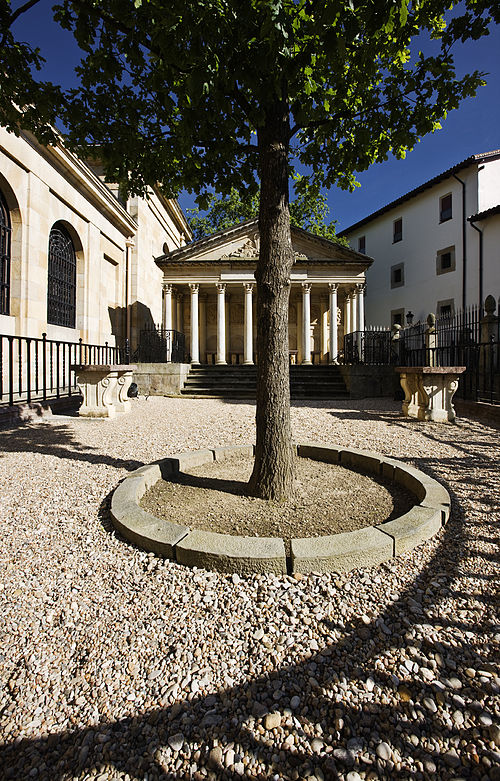
ON THIS DAY: 26 April 1937: During the Spanish Civil War, Guernica, a town in Spain’s Basque Country, was bombarded from the air by Nazi Germany’s Condor Legion and Fascist Italy’s Aviazione Legionaria. An estimated 1,654 civilians were reported killed by the Basque government but exact numbers are unclear. This number could also have included victims who died later of injuries.
Guernica was an important symbol for the Basque region because of its Gernikako Arbola (the Tree of Gernika), which symbolised freedom for the Basque people. This is an oak tree that the Lords of Biscay and the kings of Castile swore to respect Biscayn liberties under it. The first tree was planted in the 14th century and the fifth tree was planted in March 2015 (see above). However, Guernica was also a key communications and transportation hub for the Republican forces in the Basque region during the Spanish Civil War. Two Basque army battalions were housed in the town, while other Basque battalions were stationed nearby. There was also an arms factory called Astr-Unceta y Cia in Guernica that supplied firearms to the Spanish military and police forces.
The attack, ordered by Francisco Franco’s Nationalist faction, was executed by Nazi Germany’s Luftwaffe and Italy’s air force as a show of support for Franco by Hitler and Mussolini. The Nationalists were advancing towards Bilbao, and attacking Guernica would aid their efforts to conquer the Basque Country by destroying the town and disrupting the Republican movement. The bombing terrorised civilians, broke the morale of the Basque and Republican forces, and discouraged resistance.
The bombing served as a test for warfare tactics, including carpet bombing and firebombing, which Germany later adopted extensively in World War II. Most of Guernica was completely destroyed, though the town’s two arms factories were spared. Due to the immense destruction, the movement of Republican forces was severely restricted.
The carpet-bombing of Guernica remains a powerful symbol of civilian suffering. Pablo Picasso created his famous oil-on-canvas painting Guernica in 1937 as an anti-war statement. Painted in shades of grey and black, it depicts suffering, violence, and chaos. The massive artwork, measuring 11 feet 5 inches (3.4 meters) by 25 feet 6 inches (7.7 meters), is exhibited in the Museo Reina Sofía in Madrid. According to the art historian James Elkins, in his book Paintings and Tears, it is the painting before which the most people weep – an indication both of Picasso’s expressive powers and of the horrors of warfare.
